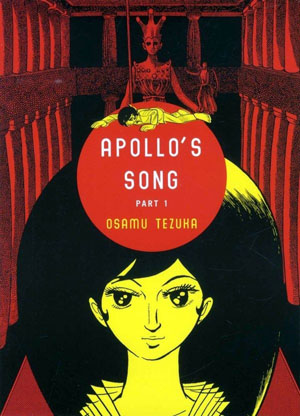 Shogo Chikaishi is a young man with a severe aversion to love and all the various butterflies and allurements that come with it. He is cold, sadistic, and no one knows what he may be capable of beyond harming animals for seemingly no reason at all. Things take an abruptly strange turn for Shogo, however, when he’s brought in for a psychiatric examination that eventually finds him strapped up for electro-shock therapy. It’s here that we get a telling glimpse of his rearing, and the psychological events that brought him to his current mental state. As a result of his twisted and incurable ways, Shogo is existentially doomed to “love one woman again and again.” His life an endless cycle through time; love and loss on repeat.
Shogo Chikaishi is a young man with a severe aversion to love and all the various butterflies and allurements that come with it. He is cold, sadistic, and no one knows what he may be capable of beyond harming animals for seemingly no reason at all. Things take an abruptly strange turn for Shogo, however, when he’s brought in for a psychiatric examination that eventually finds him strapped up for electro-shock therapy. It’s here that we get a telling glimpse of his rearing, and the psychological events that brought him to his current mental state. As a result of his twisted and incurable ways, Shogo is existentially doomed to “love one woman again and again.” His life an endless cycle through time; love and loss on repeat.
Thus begins the strange and somewhat Sisyphean journey of Shogo in part one of Apollo’s Song. The format is perfect for Osamu Tezuka, who uses it as an opportunity to showcase tragic vignettes across time, from Nazi Germany to a rumbling volcano to a grand circle back to Shogo’s precautionary confinement. In each, Shogo finds himself romantically entangled with a female, regardless of how hard he fights the urges. Fate draws him in closer and closer, and then viciously snuffs the life of either him or his lady love. The cycle repeats, reality is questioned, and it all comes barreling toward a vicious cliffhanger.
Vertical originally published Apollo’s Song as one collected volume, so some may have read it before. This was a first for me, though, and it’s definitely up there with some of Tezuka’s most intriguing and visually dynamic works published in North America. The way each story is similar yet self-contained in a way almost recalls a compacted version of Phoenix‘s narrative style. Just as readers of Phoenix are aware of the role the coveted mythical bird plays in each installment of Tezuka’s sprawling magnum opus, so are they prepared on a basic level for what’s happening to Shogo through the ages.
The fun, then, is in the execution of each woeful tale. It’s a given that Shogo will eventually be twisted and torn over love and loss by story’s end, but the journey lends each tale its own unique character. There’s often a pattern of uncertainty, learning, and acceptance, all of which are ultimately dashed.
With Apollo‘s Song we have yet another timeless yarn from the master that belongs in everyone’s manga collection. I’m eager to discover how it all concludes, but the first volume is meaty enough to leave little longing in the reader beyond that base desire. The pacing is as tight as can be, and the art showcases Tezuka at the top of his game (the story was originally serialized in 1970, so it was fairly deep into his dizzyingly storied career). His boldly illustrated depiction of life’s embryonic unfolding in the book’s opening pages is just a small taste of things to come.
Publisher: Vertical Inc.
Story & Art: Osamu Tezuka

